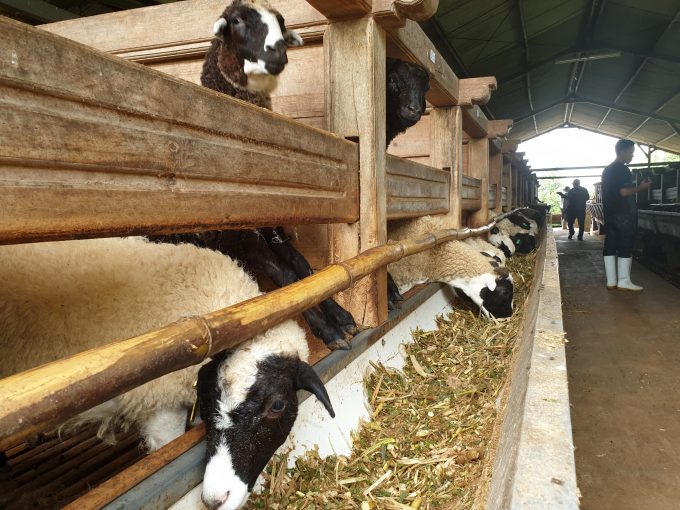
Fattening livestock is a concern for breeders, especially before certain moments such as Eid al-Adha. In fattening livestock, optimal feeding is the key to success. This was discussed in the 3rd edition of the Obrolan Peternakan (Opera) on June 20, 2020, presented by the Department of Animal Nutrition and Feed, Faculty of Animal Science (FAS) UGM.
Ir. Bambang Suwignyo, S.Pt., M.P., Ph.D., IPM., ASEAN. Eng. one of the speakers who is also the Vice Dean for Research, Community Service and Collaboration of FAS UGM, said that forage pellets can be a choice of feed with various advantages.
“Weeds as the main source of feed ingredients to make forage pellets are a type of feed material that is more resistant to extreme situations, namely heat and less water (dry season) compared to conventional grass so it is almost certain to be available/grown throughout the year,” Bambang said.
Bambang added, forage pellets also contain high crude protein fiber of more than 20%, because the mixture can be designed with the dominant main component being high nutritious weed grass.
“The nutritional level can be adjusted to the needs and availability of feed. At the same crude protein content, forage pellets are cheaper than commercial concentrates. Forage pellets can be pure forage or mixed with bran or concentrate,” Bambang explained.
Forage pellets reduce the chance of remaining feed because livestock cannot choose. If the feed is given in the form of forage, there will be much left because the cattle choose what to eat. The feed that is not selected will be trampled by livestock, mixed with manure, and piled up.
“The way of making it is very easy. The forages are mixed and put into a machine and then dried for 2-3 days with the high heat. When dry, the color becomes brownish green. The higher the concentration, the brighter the pellet color. After that, the pellets are best stored in a plastic drum because they are waterproof, strong, and can be selected in size,” Bambang said.
Bambang added that the form of pellets also became compact, not voluminous, so they were easy to pack and mobilize. It is very suitable for handling livestock in the rescue program, for example the recent eruption of Merapi or Mount Agung.
Other speakers, Prof. Dr. Ir. Ristianto Utomo, SU, lecturer at the Laboratory of Animal Feed Technology, FAS UGM, revealed that another alternative quality feed is complete fermented feed.
“The way of making complete fermented feed is as follows. First, the forage is chopped and mixed. Second, add the forage concentrate according to the formula and stir until evenly distributed. Third, the forage is added and compacted in a plastic drum and then cured for about a week. Fourth, after brooding, the feed is ready to be fed to livestock,” Ristianto explained.
Fermented complete feed is the result of fermentation of complete feed using microbes as an inoculant and molasses as a substrate. The fermentation process can increase feed digestibility and improve feed quality. In addition, complete fermented feed can be made in large quantities so that breeders have feed reserves. Thus, breeders do not need to find feed every day.
On the same occasion, Prof. Dr. Ir. Zaenal Bachruddin, M.Sc., IPU., ASEAN. Eng, a lecturer at the Laboratory of Nutritional Biochemistry, FAS UGM who is the inventor and developer of lactic acid bacteria, explained not only scientifically, but also his experience in implementing the greatness of microbes into sheep. The feed business with the concept of participating in microbes can be a promising business. Meanwhile, as animal feed, the presence of microbes in feed really supports the performance of livestock productivity.
